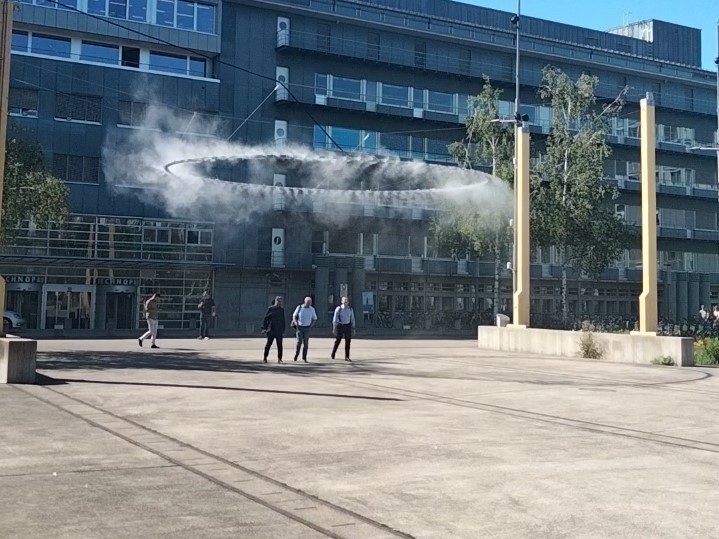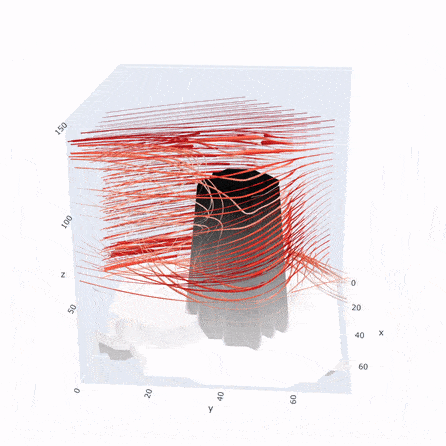Navigation menu
- Education
- Emissions & Air Quality
- Infrastructure & Services
- Meteorology & Climate
- News
- Physical Chemistry
- Projects
- The Team
Once again, it’s Hot in the city! with yesterday’s air temperatures above 30 °C across Switzerland and exceeding 34 °C in Basel. Cities struggle with this excessive heat and are exploring ways to protect their citizens and make the outdoor spaces more pleasant. We have already written about the exciting outdoor spray mist cooling pilot in Zürich in One ring to cool them all?. In 2023, two more rings and a fog-line were installed at the same location, and again, we had the opportunity to do the scientific monitoring of this experiment. Additional to a series of sensors on the ground, we extended and adapted the PALM model to include evaporative spray mist cooling and simulated the situation.
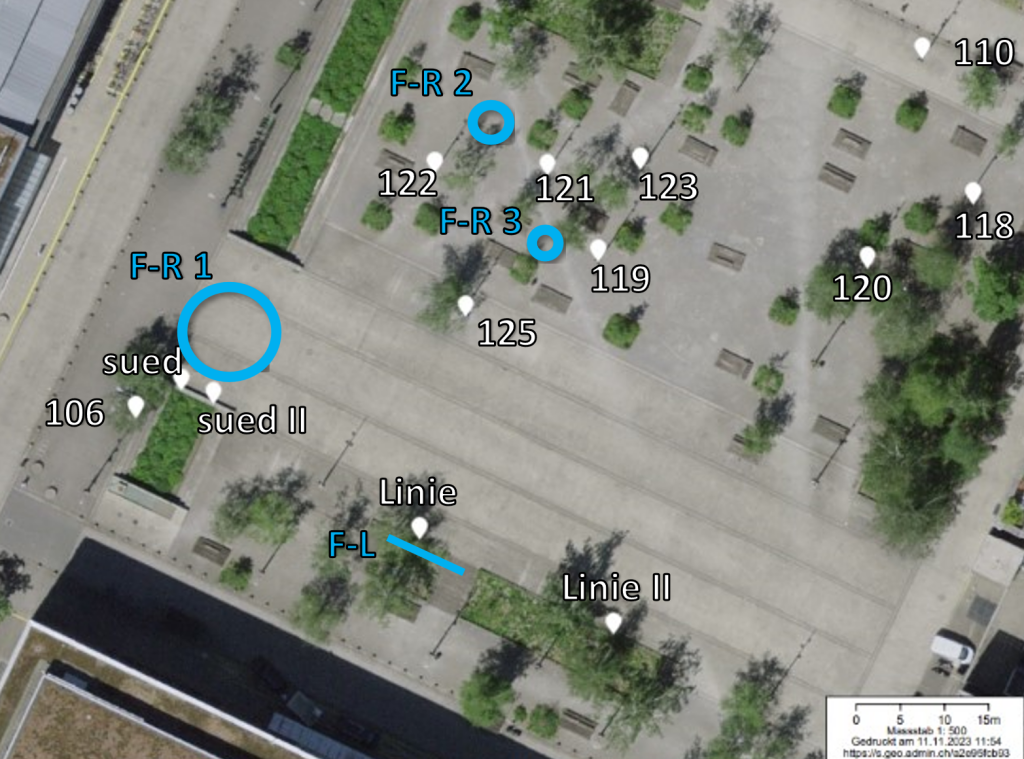
Overview of the four spray mist installations (blue) and the location of the continuous measurements (white) on Turbinenplatz, Zürich. Two smaller fog-rings (F-R 2 & F-R 3) and a fog-line near the ground (F-L) were added to the large fog-ring (F-R 1) in 2023. Image source: www.geo.admin.ch.
With the model, we have not only 3D data for the distribution of air temperature and humidity, but also for wind speeds and radiation. With this information, PET (physiological equivalent temperature) can be calculated. PET better approximates the temperature that people truly experience.
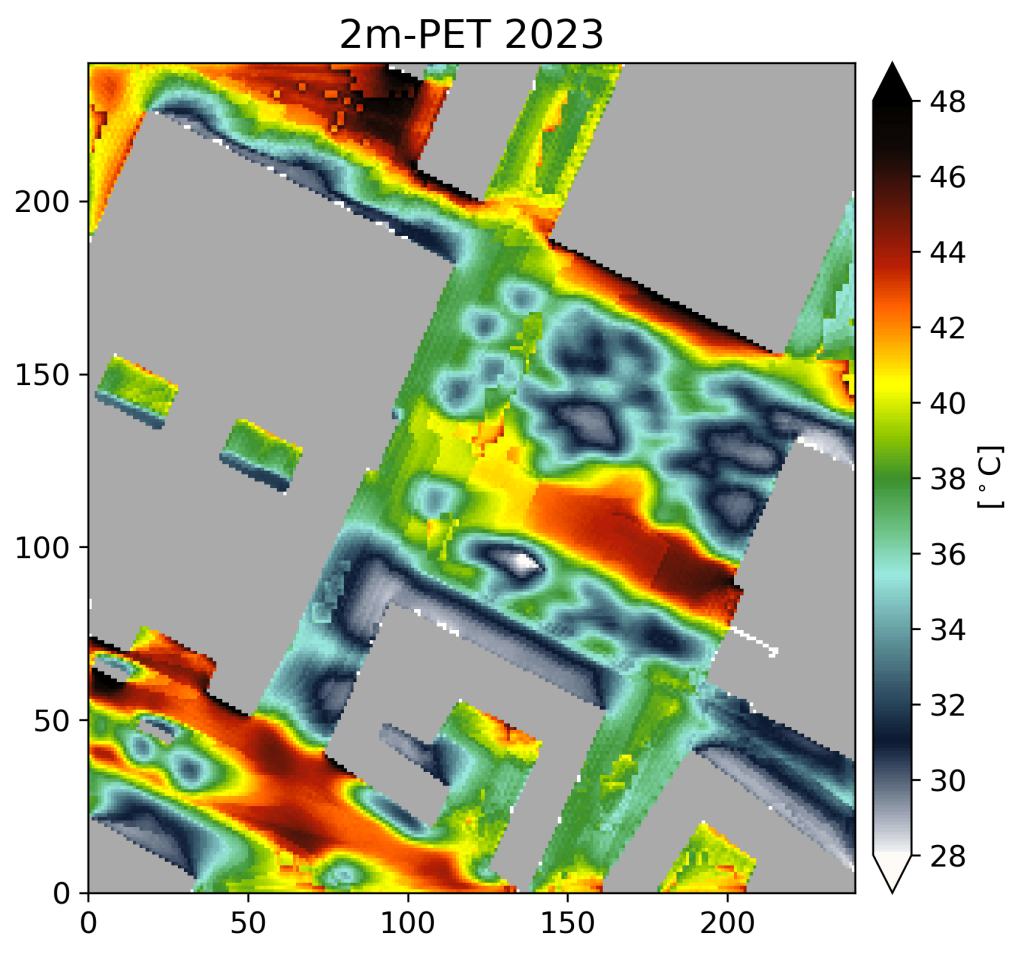
Experienced temperature (PET) at 2 m height above ground on Turbinenplatz; mean on a hot afternoon in 2023.
The gray areas are the buildings.
PET is very heterogeneous, with values above 45 °C over asphalt when exposed to the sun and much cooler areas in the shade of buildings and trees.
We can already spot the fog-line in the picture above; the only white area on Turbinenplatz. The cooling effect of the three rings is not obvious, however. Do the rings not work then?
Not at all, they do! We know that evaporating water extracts a large amount of energy, i.e., temperature, from the surrounding air. What we tend to overlook is how big outdoor spaces are and how quickly even weak winds mix and replace the local air. From the animation below, we can see the volume around the big fog-ring and the fog-line that cools down by at least 0.5 °C is quite large.
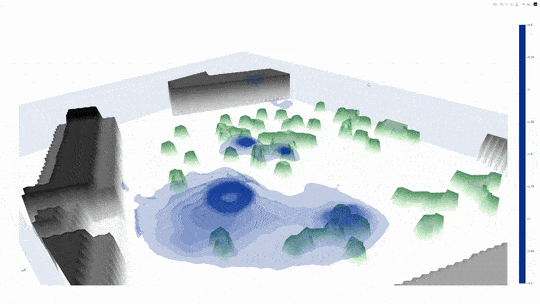
During the pilot experiment, we learned a lot about the effect of spray mist cooling on open public squares. We also had a great opportunity to validate our model against the measurements (they agree very well indeed, not shown here). We plan to employ this knowledge and adapted model in the future to improve the design and placement of outdoor spray mist cooling installations.
